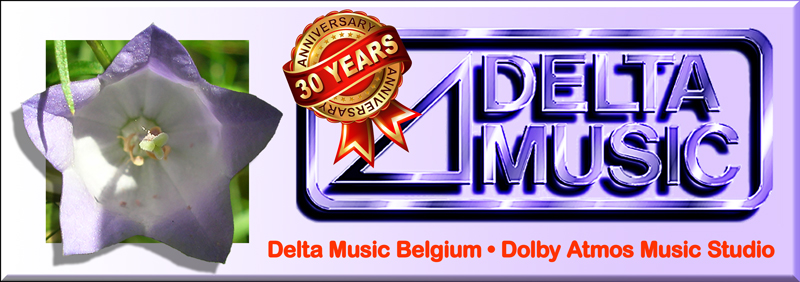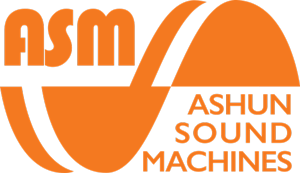News archive 2020
![]()
November 30, 2020
![]()
New in my synthesizer collection:
Roland - TR-8S - Rhythm Performer
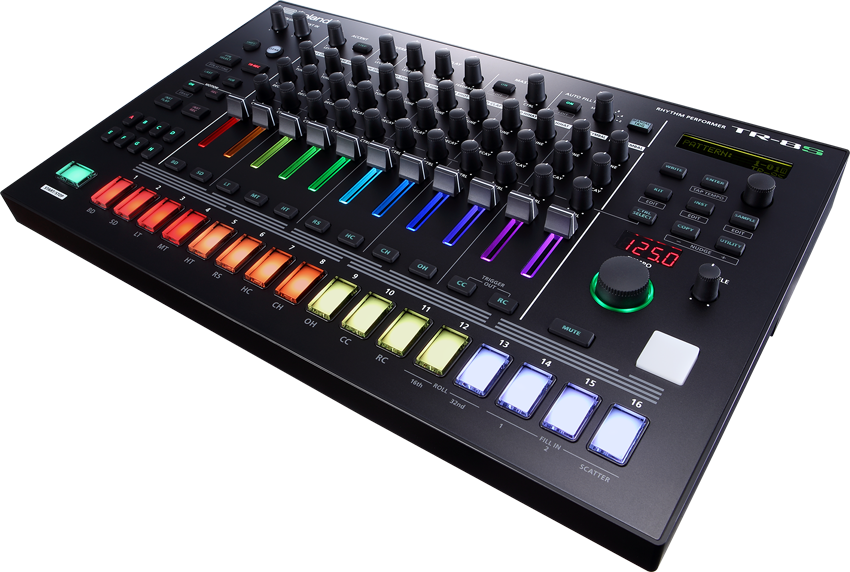
Boing Boom Tschak! Boing Boom Tschak!
The Roland TR-8S Rhythm Performer is Roland's most comprehensive drum machine and has actually been on the market since 2018. But I didn't buy this machine at the time because the specifications didn't really interest me at first, especially since almost all online demo movies were very focused on producing EDM and that's not my cup of tea.
Actually I have never been a big fan of drum computers, traditionally I much prefer to program realistic sounding drum tracks in Logic Pro or Pro Tools and use samples from real drums (almost always Toontrack Superior Drummer 3). Or sometimes I play the tracks live with my Roland TD-50KV electronic drum kit, at least if the drum part is not too difficult.
As far as I remember I only ever had 1 drum machine, it was a Boss DR-110 Dr. Rhythm GRAPHIC from 1983 (Boss is a subsidiary of Roland). This was Boss's first drum computer with an LCD screen which made programming easier, the sounds were analogue:
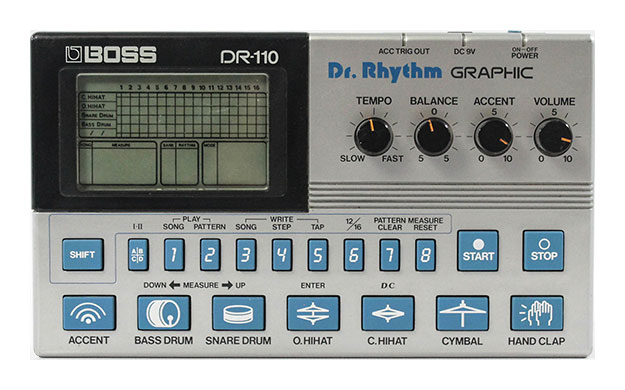
However, in 1986 I bought a KORG SQD-1 MIDI RECORDER, which allowed me to record MIDI data and record drum parts on a keyboard with drum sounds from the Roland S-10 samplers I had at the time (so a drum computer was no longer necessary) :
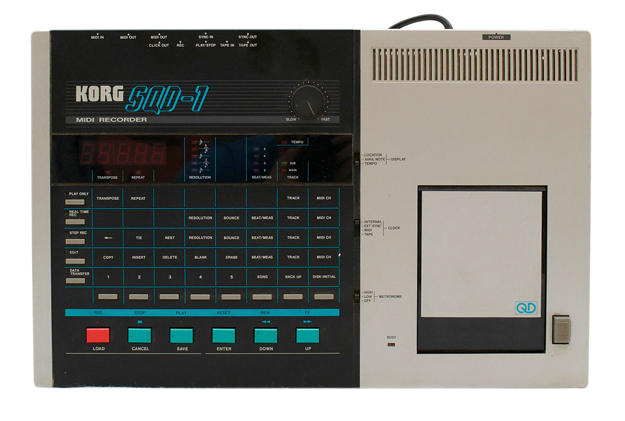
In 1990 I switched to an ATARI 1040 STE computer with C-LAB Notator software (which I still have in my possession):

C-LAB Notator was later renamed Logic and was eventually acquired by Apple who has continued to develop the software into the Logic Pro X it is today (and is still my main DAW alongside and with Pro Tools).
So I have never had one of the legendary analogue Roland TR-X0X drum computers (although I did borrow a TR-808 for a while, so I know it pretty well):

These legendary analogue Roland TR-X0X drum computers are:
- Roland TR-808 Rhythm Composer from 1980
- Roland TR-606 Drumatix from 1980
- Roland TR-909 Rhythm Composer from 1983
For the sake of completeness, there were also:
- Roland TR-707 Rhythm Composer from 1985 (with samples from the TR-909 instead of an analogue sound engine)
- Roland TR-727 Rhythm Composer from 1985 (a Latin version of the TR-707 with samples)
- Roland TR-505 Rhythm Composer from 1986 (a low budget version with inferior samples from the TR-707 and TR-727)
But these 3 digital drum machines have never reached the legendary status of the analogue Roland TR-X0X models.
It is just the sounds of those 3 aforementioned legendary analogue Roland TR-X0X drum computers that are present in the Roland TR-8S. They are generated by analogue Circuit Behavior (ACB), a digital technology that emulates the original analogue electronic circuits of those drum machines down to the level of the analogue electronic components. That ACB technology is also used in the Roland SYSTEM-8 synthesizer to emulate the legendary Roland JUPITER-8, JUNO-106 and JX-3P. I have a SYSTEM-8, so I know from experience that those emulations are very good (eg the JUNO-106's emulation is 99% identical to my old, true JUNO-106). The Roland TR-8S is therefore also at the same high level of sound quality and realism.
That is also the case for the predecessor the Roland TR-8S, the Roland TR-8 from 2014, because that drum computer uses exactly the same ACB technology:
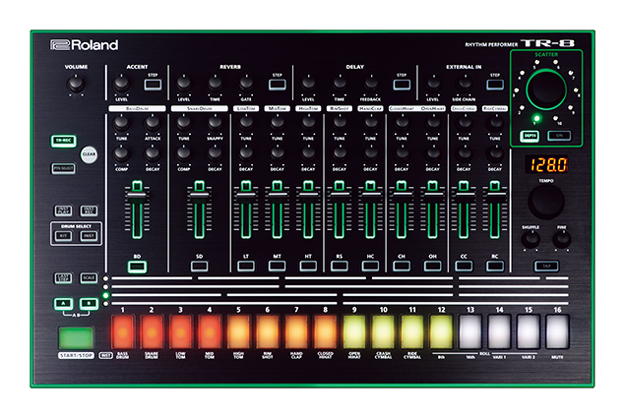
So what's the main difference between the Roland TR-8 and the TR-8S? The 'S' stands for 'sampling, so there are also 300 samples of other drum sounds and sounds available + you can also load your own samples. Furthermore, since software update v2.0, there is also an FM sound generator that can make typical FM sounds.
As mentioned before, the TR-8S is primarily intended to make live EDM tracks with all the trimmings and not so much to use as a drum machine in a studio. The Roland TR-8S is certainly not limited to just programming a drum track as was the case with the original TR-X0X drum computers. But since EDM is absolutely not my thing, I will not go into further what the TR-8S can or cannot do in that area, because that information is extensively available on the internet.
So why did I buy the Roland TR-8S? First and foremost for its very good emulation of the TR-808 Rhythm Composer and the Roland TR-606 Drumatix, both from 1980, because I like to hear these sounds and especially a lot of nostalgia calls. And furthermore, I mainly want to use the Roland TR-8S to jam live in the studio, without Logic Pro X, without Pro Tools, just program a drum pattern, load some of my own samples and program a rhythmic or melodic pattern with it, control the tempo of some built-in sequencers of synthesizers and then ... play live.
So I mainly bought the Roland TR-8S ... to have fun :-)
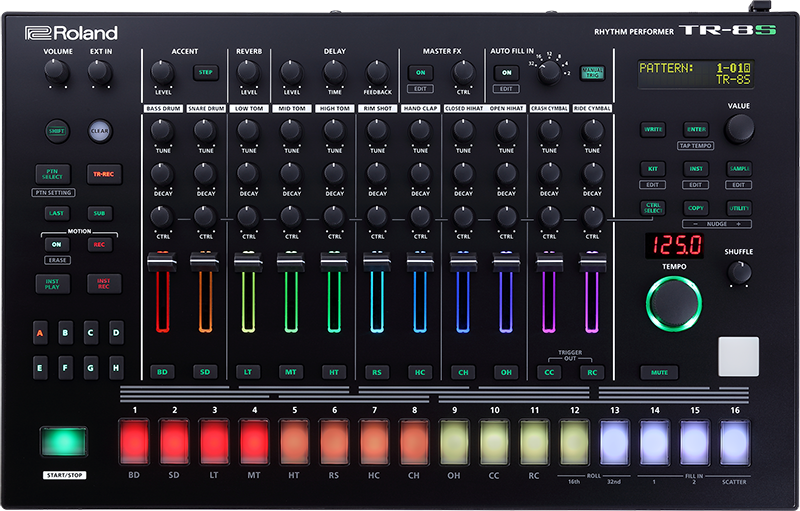
![]()
November 15, 2020
![]()
New in my synthesizer collection:
ASM - HYDRASYNTH

ASM (Ashun Sound Machines) is a new synthesizer manufacturer from China (HongKong) and released the HYDRASYNTH in 2019. There is a lot to say about this machine, but ... the keyboard has polyphonic aftertouch!
Indeed, POLYPHONIC AFTERTOUCH!
It is the first time since the early 1990s (Ensoniq) that a synthesizer has returned to the market with a keyboard where you can play a chord and press one or more keys harder, so that only those keys pressed harder an effect is heard and therefore not on all pressed keys. Because if a synthesizer has an aftertouch keyboard, this is almost always monophonic aftertouch (channel aftertouch) where you play a chord, press 1 key harder and then an effect is heard on all notes. A keyboard with polyphonic aftertouch can therefore be played much more expressively than a keyboard with only monophonic aftertouch.
The most famous synthesizer in history with polyphonic aftertouch is of course the YAMAHA CS80 which became world famous for the way Vangelis played it, for example think of the music for the film Blade Runner:

But the CS80 also had a 'ribbon controller' above the keyboard as an extra to be able to make sliding pitch bends by swiping your finger over it.
But ... at ASM they have done their homework really well because the ASM HYDRASYNTH also has a ribbon controller above the keyboard and over the entire width of the keyboard (so an octave longer than on the CS80). And it also works in 3 modes: either the classic Pitch Bend mode, or Modulation Only mode and there is also a Theremin mode, with which you can play a solo part with the ribbon controller as if it were a Theremin (on top of the accompaniment that you then play the keyboard).
The ASM HYDRASYNTH also exists as a desktop module, so without a ribbon controller or keyboard, but with 24 touch-sensitive silicone pads that also generate polyphonic aftertouch:
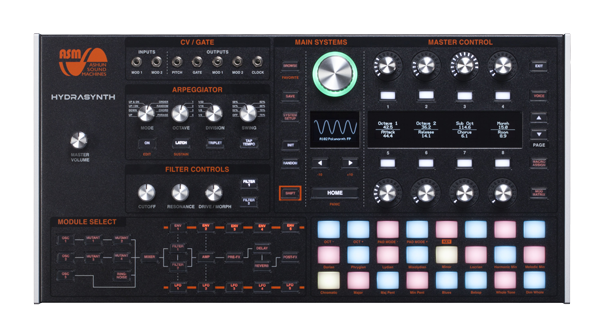
Furthermore, the ASM HYDRASYNTH is primarily a contemporary, very extensive 8-voice polyphonic digital synthesizer with, in short, the following options:
- multiple synthesis options including wavetables, linear FM, WavePWM, subtractive, etc...
- 3 x oscillators per voice and 4 x Mutator waveshapers, the WaveScan oscillators have 219 waveforms
- 7 types Mutator waveshapers: FM-Lin, WaveStack, PW-Orig, PW-Squeeze, PW-ASM, Harmonic Sweep and Hard sync
- dual filters: 1 x multimode (11 types) and 1 x variable LPF-BPF-HPF, with series/parallel routing options
- 5 LFOs per voice, with 11 waveforms
- an arpeggiator with 8 modes, including chord and phrase modes
- CV, Gate and Clock inputs and outputs
- etc...
However, there is also 1 extra button that is certainly worth mentioning and that is this special button:

Very few synthesizers have this button, this is my first synthesizer ever with a random button. In software synthesizers you sometimes see this function still appear, but this button is also rather rare there. The function is simple: press it and all programmable parameters are assigned a random value. In the majority of cases this will produce a totally useless sound, but sometimes a sound suddenly appears on which you can build further. Or in very rare cases you win gold and get a beautiful, unique sound that no one could ever have consciously programmed ...
But ASM has expanded the functionality of this button even further, or more precisely limited it, because in many places during the programming of a sound you can use that button to generate random values for one or only a few parameters at the same time.
Let's go back to that polyphonic aftertouch: of course I still have my beloved ROLI Seaboard RISE 49:
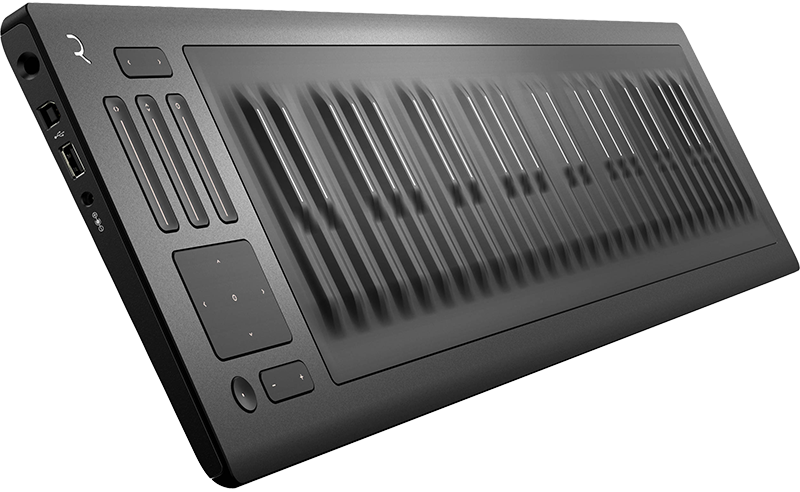
This keyboard with its playing surface made of soft silicone also has polyphonic aftertouch and is actually one large ribbon controller in its entirety (you can slide above, below, over and between the keys), but you have to be used to this way of playing to achieve useful results.
So for someone new to playing on a Seaboard, the ASM HYDRASYNTH keyboard is a welcome addition with its standard piano keyboard with polyphonic aftertouch and a simple ribbon controller. And you get the built-in synthesizer for free :-)
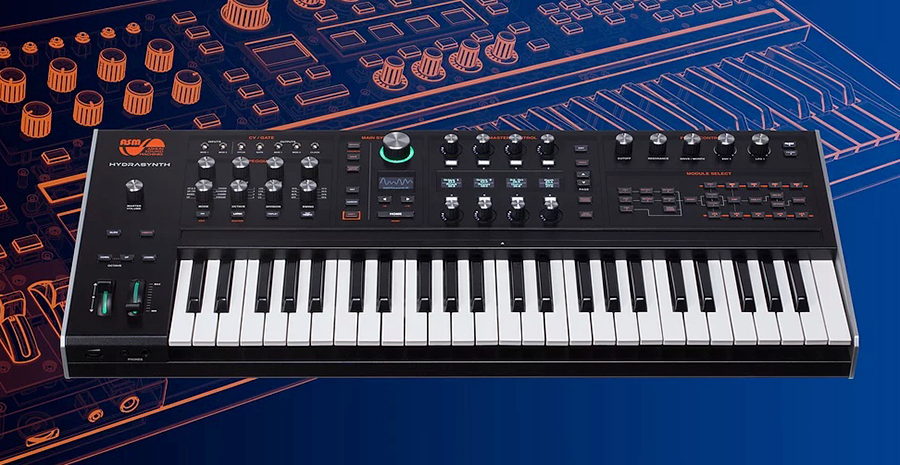
![]()
August 22, 2020
![]()
New in the studio:
Lexicon - PCM96 Surround D
Parallel Stereo and Surround Reverb/Effects Processor
![]()
Actually, the title above should have been: "New in my synthesizer collection: ARP 2600 FS!" with the photo below in large below the title:
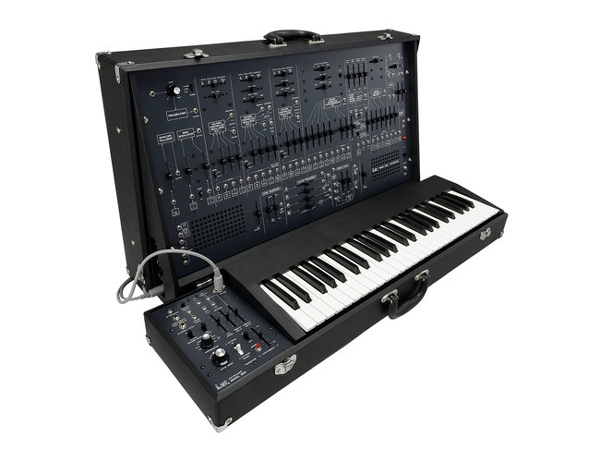
In January 2020, KORG re-released the legendary ARP 2600 semi-modular synthesizer from 1971 in a limited edition of only 800 pieces. The 'FS' in the name stands for 'Full Size', so it is a full size replica. As soon as I was informed of the news, I immediately ordered and paid for one.
But it wasn't meant to be... Many more have been ordered worldwide than the 800 that are being produced and after months of waiting and many wild rumors about which countries would or would not receive ARPs I received the news that there will be no more available and that my order was canceled.
It would have been nice to have one as a collector's item (although of course it would not have been an original device but only a replica) and this synthesizer might also have been very interesting in terms of sound possibilities. Especially for bleeps and burps actually, because the ARP 2600 is mainly known because it was used to make the voice of R2-D2 from the Star Wars movies.
Actually, the intention was that I would have received the Arp 2600 FS in the course of the spring and to officially announce this purchase on July 3, 2020 (in the post below) as a big birthday present for the 25th anniversary of Delta Music Belgium !
Well ... I juit didn't happen. But who knows, maybe one day I could still announce the purchase of a Roland JUPITER-8 for the next birthday, because that synthesizer is and will still be my biggest favorite :-)
Here by way of farewell a last photo of the front panel of an ARP 2600 FS:

In any case, suddenly an already spent budget became available and I quickly decided to use this budget for the purchase of a Lexicon - PCM96 Surround D - Parallel Stereo and Surround Reverb/Effects Processor.
![]()
Lexicon has, of course, been the standard in digital reverb since the 1980s. It's no coincidence that Lexicon is considered "the godfather of digital reverb", with legendary (and very expensive) machines like the 224, 480L and 960L. But also the slightly more affordable PCM series is well known with legendary machines such as the PCM70, PCM80, PCM90 and PCM92, the latest incarnation being the PCM96 and the PCM96 Surround.
I have never owned Lexicon machines myself for the simple reason that Lexicon plugins for Pro Tools have been around for a long time and I have always owned and used them.
Even today by the way, I use the Lexicon PCM Native Reverb plugin Bundle in Pro Tools:
![]()
Ultimately, external digital reverb/effects processors are just mathematical algorithms in a computer and so all the above-mentioned legendary Lexicon machines were only digital arithmetic boxes. The main reason those machines were so expensive at the time was because digital technology and DSP (Digital Signal Processing) were still in its infancy and therefore very expensive.
In principle, with the current computing power of computers with Pro Tools (or other DAWs), there is little or no reason anymore to use external reverb/effects processors. The Lexicon PCM Native Reverb plugin Bundle with plugins for Pro Tools, for example, uses identical algorithms as the Lexicon PCM96 machine, so why buy a Lexicon PCM96 anyway?
First and foremost: I did not buy a Lexicon PCM96 but I did buy a Lexicon PCM96 Surround, there is a big difference because the Lexicon PCM Native Reverb plugin Bundle can only be used in stereo, while the Lexicon PCM96 Surround ... indeed... can be used in surround mode :-)
So there is a specific Lexicon surround algorithm in the Lexicon PCM96 Surround that is not available in Pro Tools. By the way, there are few real surround reverbs available as a plugin in Pro Tools anyway, because usually these are just 3 stereo reverberations internally that actually imitate 5 or 6-channel surround reverberation and therefore no real surround algorithm is used.
Second: I use Pro Tools HDX hardware, which means that all the computing power for Pro Tools is on the HDX cards and the internal CPU of the computer is used little or not for plugins. Unless of course you are going to use 'native' plugins, these plugins do use the computing power of the computer's internal CPU and not the computing power on the HDX cards. And the Lexicon PCM Native Reverb plugin Bundle is ... indeed... native :-)
By using the Lexicon PCM96 Surround instead of the Lexicon PCM Native bundle, native computing power becomes available on the internal CPU that I can use for soft synths, for example. It is also true that for Pro Tools HDX there are not so many digital reverb plugins available because they traditionally require a lot of RAM and that RAM is by definition limited on the HDX cards. Most high-end reverberations in Pro Tools (and the other DAWs) are almost always native plugins (or external processors such as the Lexicon PCM96 Surround)
Third, the Lexicon PCM96 Surround can function as 4 separate mono machines (serial and/or parallel), 2 separate stereo machines (serial or parallel) or 5 or 6 channel surround. With the Lexicon PCM Native Reverb plugin Bundle this is not possible, unless of course you are going to use multiple plugins at the same time, which in turn requires more native computing power from the internal CPU of the computer (and true 5 or 6 channel surround is anyway not possible with Lexicon PCM Native Reverb plugin Bundle anyway)
And finally: it is a Lexicon PCM96 Surround D where the 'D' stands for 'Digital' so this machine only has digital AES/EBU connections and no analogue connections with internal AD/DA converters. So I connect it digitally to one of the Pro Tools interfaces so that no AD/DA conversions have to be done that could degrade the sound signal.
Actually there is also the Lexicon PCM96 Surround A with analogue + digital AES/EBU connections, but those analogue connections and internal AD/DA converters are of little to no use for me + that machine is also about 1,000 euros more expensive than the Lexicon PCM96 Surround D So I was able to save that 1,000 euros nicely and that way I stayed nicely within my predetermined budget (an ARP 2600 FS costs about the same as a Lexicon PCM96 Surround D)
Oh yes, for the sake of completeness: a Lexicon PCM96 Surround works up to 24bit / 96 kHz and calculates with 32 bit floating point precision
![]()
July 03, 2020
![]()
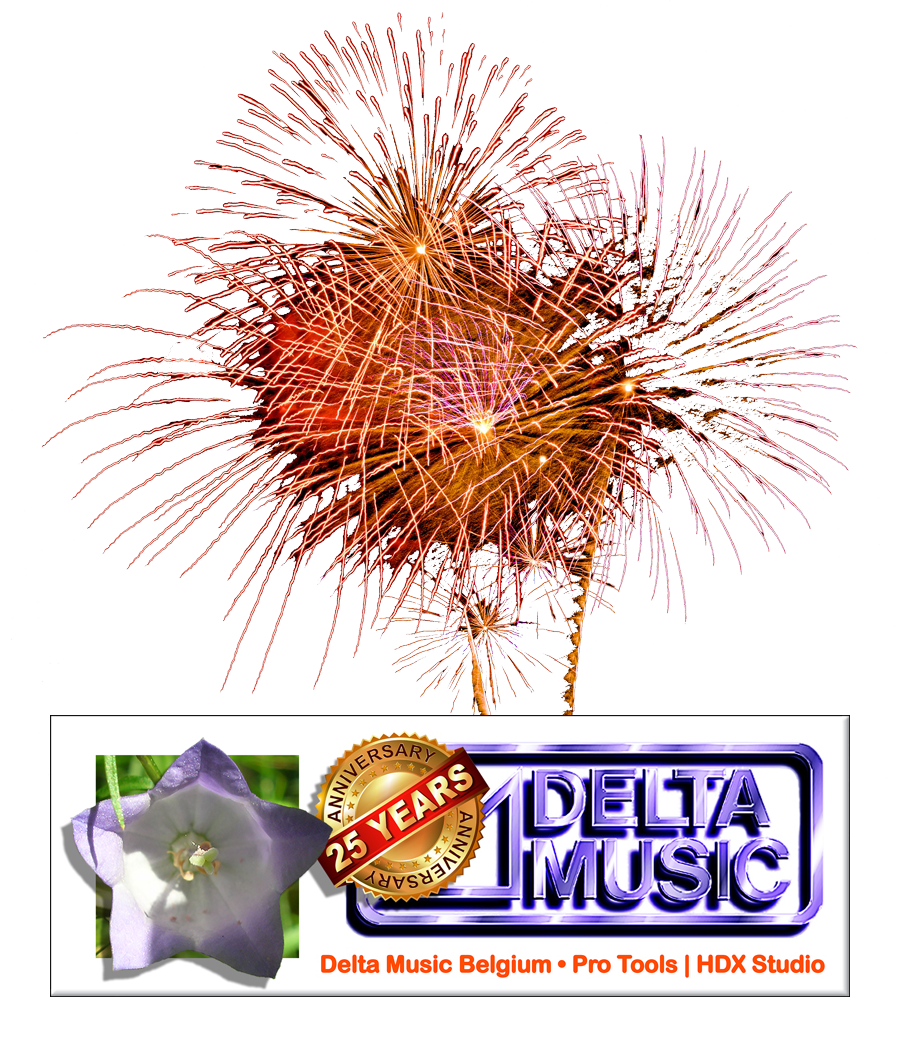
03 juli 1995 - 03 juli 2020
Delta Music Belgium celebrates 25 years in bussiness!
Time flies...
![]()
June 21, 2020
![]()
Back from a long time ago:
real volume faders, knobs and push buttons for
Pro Tools | Ultimate!
(and immediately also for Logic Pro X)
AVID -
S3 Control Surface
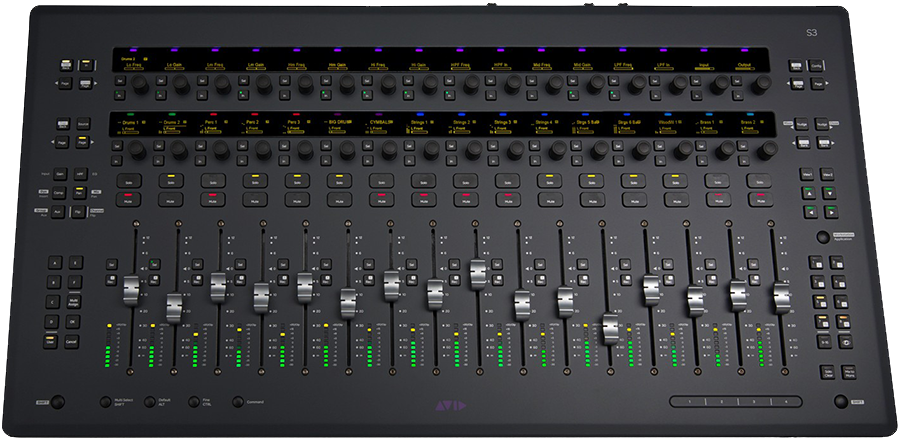
For several years I have been working with the Slate Media Technology - RAVEN CORE STATION with two RAVEN MTi2 27” Multi-Touch touch-sensitive screens to control Pro Tools | Ultimate:
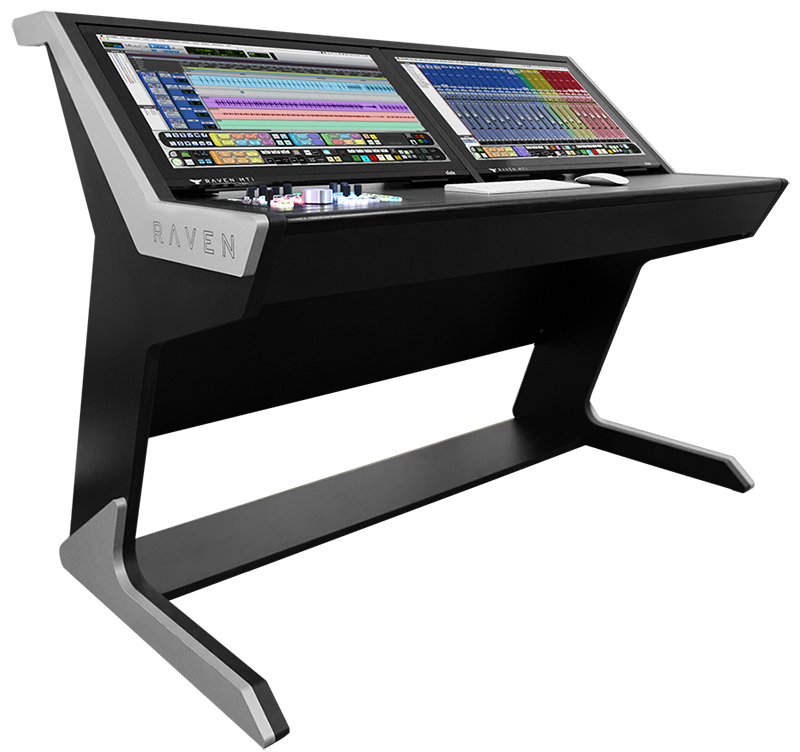
This works fine technically, but I don't find the included RAVEN Control software that handy.
The RAVEN Control software gives you extensive multi-touch options, allowing you to touch and move multiple faders simultaneously. However, the problem is that RAVEN Control software uses an overlay of its own software faders for this, which must be positioned meticulously over the existing standard Pro Tools faders. This is always a hassle, so I no longer use the RAVEN Control Software. This removes the extensive multi-touch options, the screens become single-touch and you can only touch 1 fader or button at a time. I don't think this is a problem at all because usually you only want to change 1 parameter at a time and then 1 finger is just enough :-)
But ... for many years I worked with a Digidesign ProControl, first for a long time one with only 8 faders, but in the end I had a ProControl with 48 faders:

But I had to sell it because it stopped working with versions higher than Pro Tools 10 HD and I got more and more stuck with an outdated version of Pro Tools. In the end I decided to purchase a RAVEN CORE STATION with 2 RAVEN MTi2 27 ”Multi-Touch touch-sensitive screens.
Actually I should have bought an AVID S6 Control Surface with 48 faders then because this was the logical successor of my Digidesign ProControl, this is a picture of such a mixer / controller:
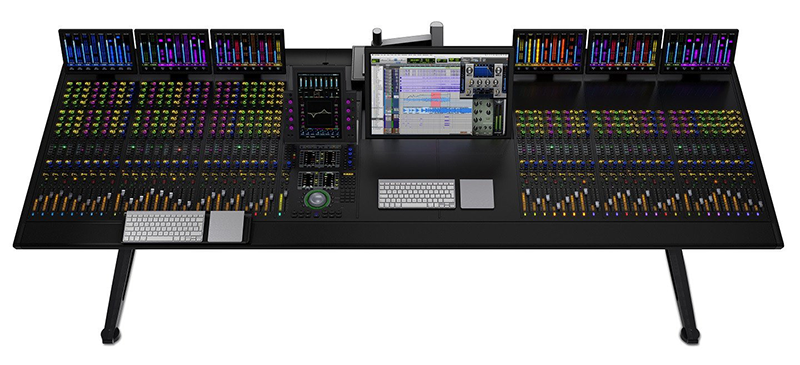
But then I would have better bought a nice sports car, because it costs the same price and at least retains its value as it gets older, something that cannot be said of the above mixing tables / controllers ...
But still, with my RAVEN CORE STATION with 2 RAVEN MTi2 27 ”Multi-Touch touch-sensitive screens, I miss a set of real faders and buttons, even though I am a big fan of touch sensitive screens ...
From the time with my ProControl with 48 faders, I know that although 48 faders are very impressive, they are also not that user-friendly. Because in smaller studios you have the problem that if you go to fader 1 to 16 or fader 33 to 48 you can no longer hear what you are doing because you are no longer directly in front of the speakers. In practice I mainly used faders 17 to 32 on my Digidesign ProControl and the others were left untouched most of the time.
So a smaller controller with only 16 faders would be much more convenient for me than such a large mixer / controller so I logically ended up with the AVID S3 Control Surface:
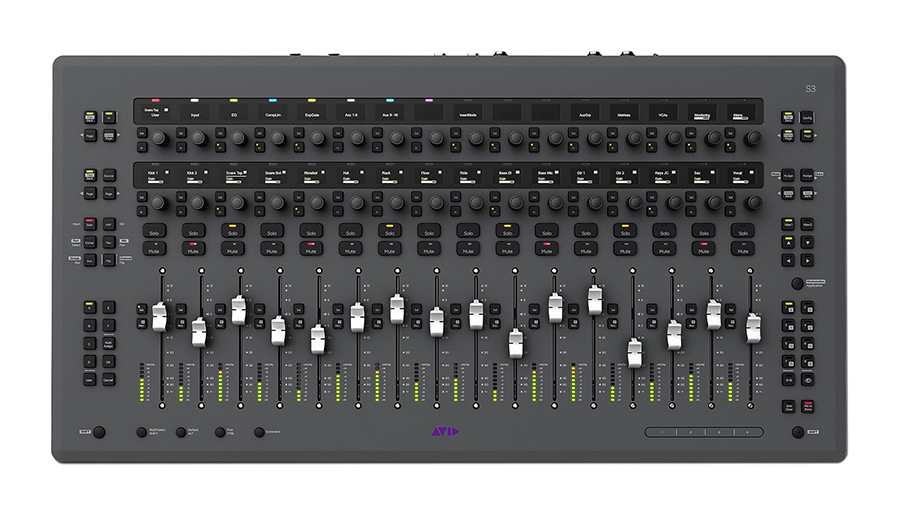
This controller has 16 motorized faders, 32 touch-sensitive rotary knobs, 32 OLED screens, a lot of other buttons and is only 71 cm. wide. But it is a direct descendant of the big AVID S6 and costs only as much as a small second-hand car.
And what's also very nice: this controller works according to the EUCON protocol, what means that it can not only control Pro Tools but also Logic Pro X and many other DAWs.
And ... which is certainly not unimportant: just because the S3 uses the EUCON protocol, AVID cannot suddenly make the S3 incompatible with new Pro Tools versions as has happened with my old faithful Digidesign ProControl. I am still very angry about that and actually this is also one of the main reasons why I only recently bought an AVID S3, because I had once vowed never to buy an AVID controller again ...
So now my RAVEN CORE STATION with the AVID S3 Control Surface looks like this:

For me it is the ideal combination of the best of 2 worlds: 2 large touch-sensitive screens with just enough real faders and buttons, I am very satisfied with it!
Maybe I should have done this much earlier, but the buzzword in the media for the virologists in these days of the corona crisis is 'progressive insight' so ... I just used my personal progressive insight :-)
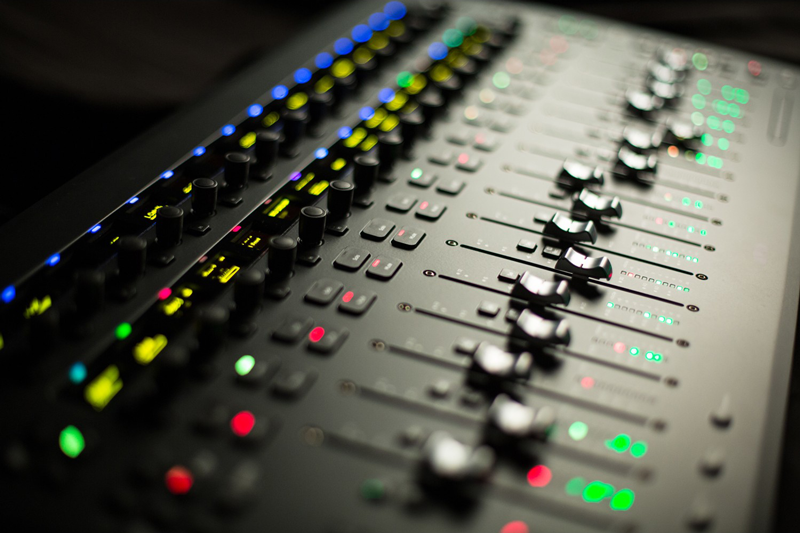
![]()

![]()
![]()
Copyright © 1995-2025 by Delta Music Belgium • Dolby Atmos Music Studio • Rummenweg 30 • 3800 Sint-Truiden • Belgium
All Rights Reserved
Privacy notification and cookie policy
All product names, logos, and brands are property of their respective owners.
All company, product and service names used on this website are for identification purposes only.
Use of these names, logos, and brands does not imply endorsement.
![]()
